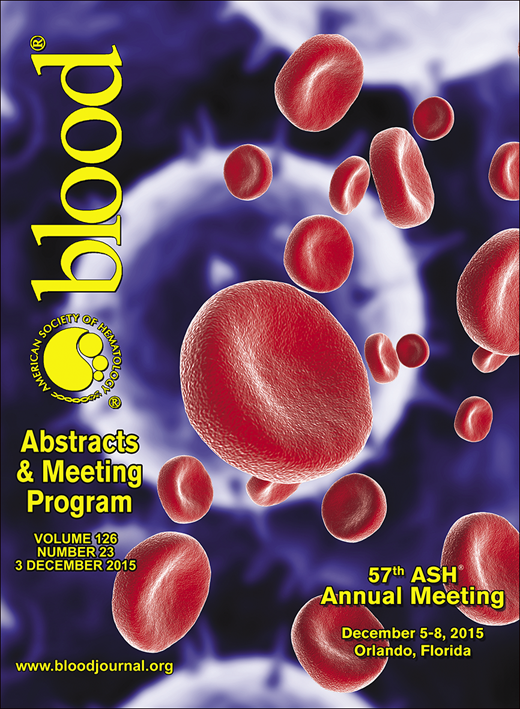Abstract
INTRODUCTION: The phosphatidylinositol 3-kinase (PI3K) pathway is consistently activated in relapsed/refractory Hodgkin lymphoma (HL). Activation of this pathway is critical for transformation and also for the angiogenic switch in malignant cells. Thus, inhibition of PI3K holds the promise of a multistep strategy for tumor inhibition. Expression of the δ and γ isoforms of PI3K is restricted to cells of the hematopoietic system, suggesting that RP6530, a novel PI3K δ/γ Inhibitor, might represent a promising approach in the treatment of lymphomas. The CD30-directed antibody-drug conjugate, Brentuximab Vedotin (BV), has recently been reported to induce a high overall response rate in relapsed/refractory HL, but is associated with limited response duration. Combination therapies aimed at enhancing the anti-tumor activity of BV and eventually reducing its side effects may have significant clinical impact in the treatment of relapsed/refractory HL. Our study aimed at investigating the activity and mechanism(s) of action of RP6530 in combination with BV in preclinical HL models.
METHODS: Three HL cell lines, including L-540, KM-H2 and L-428, were used to investigate the effects of RP6530 and BV on cell growth and survival in vitro. Western blotting (WB) was used to assess the effects of RP6530 on both the PI3K/AKT and MAPK pathways. The efficacy and mechanism of action of RP6530/BV combination was finally analyzed in NOD/SCID mice bearing HL cell line xenografts. To analyze tumor vasculature, we performed in vivo biotinylation of vascular endothelial proteins.
RESULTS: Inhibition of the PI3K pathway byRP6530 (1.25 - 20 µM) resulted in reduced Akt phosphorylation, decreased cell proliferation (range, 30% to 40%) and induction of apoptosis (range, 30% to 60%) of HL cells. Interestingly, RP6530 treatment also resulted in an early dose-dependent inhibition of ERK1/2 phosphorylation. BV, at clinically achievable concentrations induced a significant growth inhibition (range, 30% to 40%) in all HL cells. Remarkably, when RP6530 was combined with BV at minimal, or mildly inhibitory concentrations, a highly synergistic inhibition in all HL cells was observed. Following a 48 hour exposure, RP6530 (5 μM) and BV (10 ng/ml) synergistically inhibited the mean (±SEM) growth of HL cells (RP6530: 9 ± 3%; BV: 12 ± 3%; RP6530/BV: 26 ± 3%). While single agents induced only 20% HL cell death, combination of RP6530 and BV caused remarkable induction of apoptosis (90%), with Combination Index (CI) as low as 0.003. Consistent with the lack of vascular CD30 expression, caspase-3 staining of L-540 tumor sections failed to detect apoptotic Tumor Endothelial Cells (TECs) in BV-treated tumors while a marked apoptosis of TECs was detected in mice receiving RP6530 alone or the combination therapy. Additionally, a significant increase of tumor necrosis (2-fold increase, P ≤ 0.0001) was detected in mice receiving RP6530/BV as compared to single agents. Apoptosis of TECs resulted also in a significant reduction of tumor vessel density with a 90% decrease of vessel density over controls being observed in mice receiving RP6530 alone. This finding was paralleled by histological observation of severe disruption of the tumor vasculature, which was deficient in capillaries and lacked most of its branches and sprouts. In keeping with the lack of apoptosis in TECs, treatment with BV alone failed to affect L-540 tumor vessel density and vasculature morphology. Furthermore, the combined RP6530 (100 mg/kg/BID/3 weeks) and BV (0.5 mg/kg/q4x4d) treatment significantly reduced the growth of L-540 and KM-H2 nodules, resulting in a mean tumor growth inhibition of 50% (P ≤.0001), compared to single agents. No mice experienced any apparent treatment-related toxicity.
CONCLUSIONS: The novel PI3K δ/γ inhibitor RP6530 synergistically enhances the anti-tumor activity of BV by increasing drug-induced cell death and inhibiting tumor angiogenesis in HL cell line xenografts. These data provide a strong rationale for clinical studies using RP6530/BV in combination in refractory/relapsed HL patients and warrants clinical evaluation.
Viswanadha:Incozen: Employment. Vakkalanka:Rhizen Pharmaceuticals SA: Employment, Equity Ownership.
Author notes
Asterisk with author names denotes non-ASH members.

